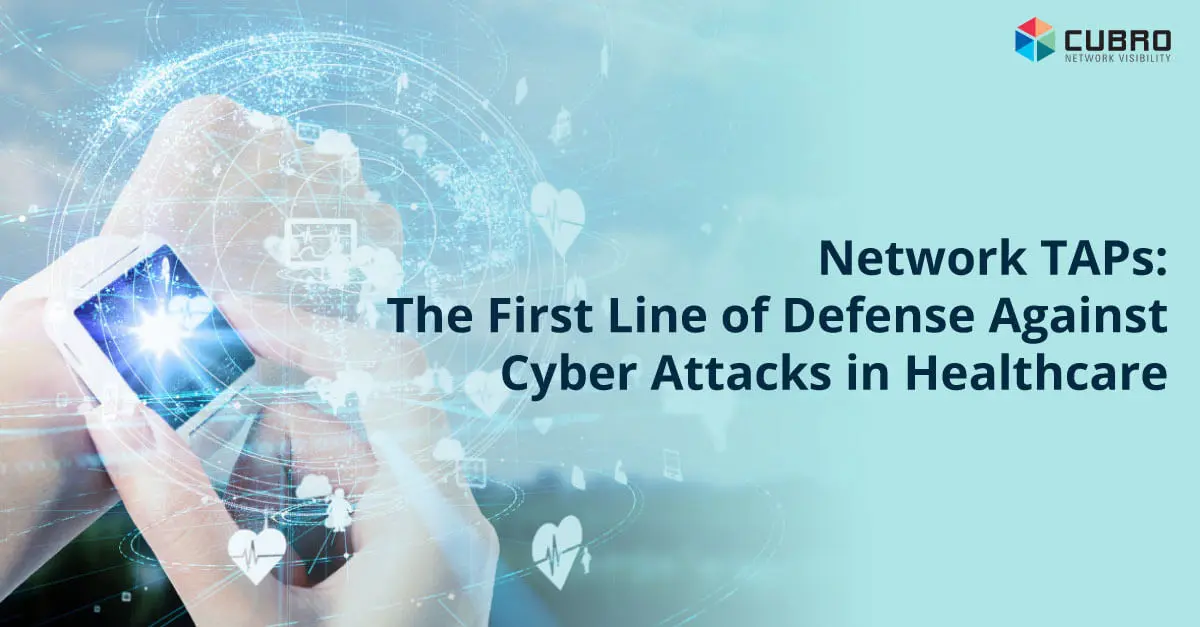
In the increasingly digital landscape of healthcare, ensuring the security of sensitive patient data and the reliable operation of medical devices is paramount. Cyber attacks on healthcare institutions have risen sharply, threatening patient safety, data privacy, and operational continuity. Network TAPs, often overlooked in cybersecurity strategies, serve as a critical first line of defense against these threats by providing passive data access. This article explores the role of network TAPs in identifying and mitigating cyber threats and presents case studies where breaches could have been prevented.
Understanding Network TAPs
Network TAPs (Test Access Points) are hardware devices that create an exact copy of the data flowing across a network. By providing a passive, out-of-band access point, network TAPs allow for continuous monitoring and analysis of network traffic without disrupting the flow of data. This visibility is crucial for identifying anomalies and potential threats in real-time.
The Role of Network TAPs in Cybersecurity
- Continuous Monitoring: Network TAPs offer 24/7 visibility into network traffic, ensuring that any suspicious activity is detected promptly. Unlike SPAN ports, which can miss packets during high traffic periods, network TAPs capture all data, providing all packets for a comprehensive network view.
- Early Detection of Threats: Network TAPs provide all packets for analytics systems, which analyse traffic patterns and detect deviations from the norm. These systems can identify threats before they escalate into full-blown attacks. This early detection is vital for preventing data breaches and minimising damage.
- Forensic Analysis: Network TAPs provide a complete and accurate record of network traffic that analytics systems can store. For example, detailed forensic analysis can be done on the stored data in a security incident. This data is crucial for understanding the scope of the attack, identifying the entry points, and developing strategies to prevent future breaches.
- Compliance and Reporting: Network TAPs help maintain compliance with healthcare regulations such as HIPAA by ensuring continuous monitoring and logging of all network activity. Network analytics can use the data in auditing and help demonstrate adherence to security protocols.

Case Studies of Preventable Healthcare Breaches
1. WannaCry Ransomware Attack (2017)
The WannaCry ransomware attack affected numerous healthcare organisations worldwide, including the UK’s National Health Service (NHS). The ransomware exploited vulnerabilities in outdated Windows systems, encrypting data and demanding ransom payments.
- Preventable Aspect: Network TAPs give a 1:1 copy of network traffic, even under abnormal high traffic conditions typically associated with the ransomware’s spread. By identifying this unusual activity early, security teams could have isolated infected systems and prevented widespread disruption and data loss.

2. Anthem Data Breach (2015)
Anthem, a major health insurance provider, suffered a data breach that exposed the personal information of nearly 80 million individuals. Hackers gained access through a phishing attack and moved laterally within the network, exfiltrating data over several months.
- Preventable Aspect: With network TAPs in place, Anthem could access network traffic any time and find unusual internal traffic patterns indicative of lateral movement. The TAPs would have provided visibility into data exfiltration activities, allowing for a quicker response and mitigation of the breach.
3. SingHealth Breach (2018)
Singapore’s largest healthcare group, SingHealth, experienced a cyber attack that compromised the personal data of 1.5 million patients, including the Prime Minister. The attackers accessed the system through an end-user workstation and maintained access for several months.
- Preventable Aspect: Network TAPs offer 24/7 access to data flowing through a network and play a vital role in detecting anomalous traffic between the compromised workstation and the internal servers. Continuous monitoring would have highlighted the unusual data access patterns, prompting an investigation and containment of the threat.

Conclusion
Network TAPs are indispensable tools for healthcare network engineers, providing critical visibility and enabling early threat detection. Healthcare organisations can significantly enhance their defenses against cyber attacks by integrating network TAPs into the cybersecurity infrastructure. As illustrated by the case studies, many high-profile breaches could have been mitigated or prevented with the comprehensive monitoring and analysis network TAPs enable. Investing in network TAPs is not just a strategic advantage but a necessary step in safeguarding patient data and ensuring the uninterrupted delivery of healthcare services.
Understanding and implementing network TAPs can transform network engineers’ approach to cybersecurity, moving from reactive measures to proactive defense. This will fortify the healthcare sector against the ever-evolving landscape of cyber threats.
